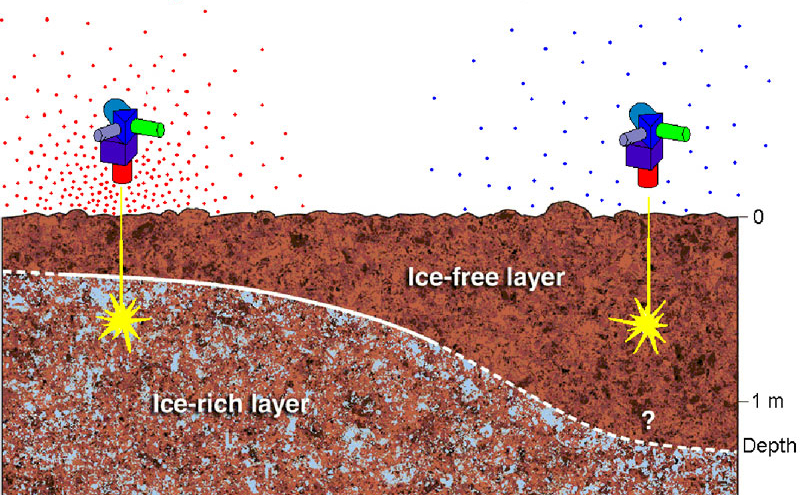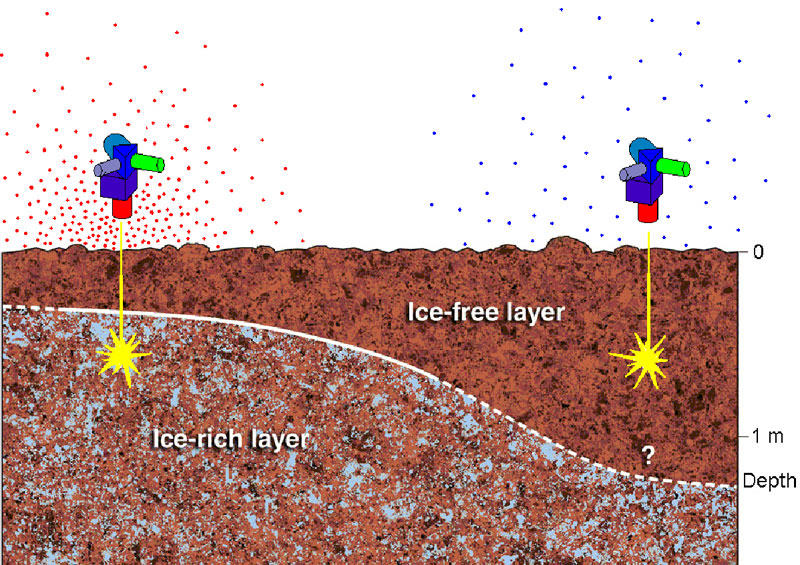Detecting Subsurface Water

February 16, 2009
| Credit | NASA/JPL-Caltech/Russian Federal Space Agency |
|---|---|
| Language |
|
Water, whether liquid or frozen, absorbs neutrons more than other substances. The Detector of Albedo Neutrons on the Mars Science Laboratory rover will use this characteristic to search for subsurface ice on Mars.
Image credit: NASA/JPL-Caltech/Russian Federal Space Agency

